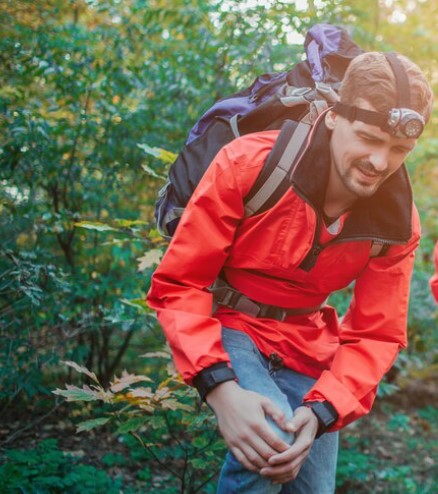Solo adventure travel is a unique and fulfilling experience that is becoming more popular with travelers around the world. The freedom to explore at your own pace, set your own itinerary and truly immerse yourself in new cultures and surroundings is something that is truly priceless.
Whether you are seeking adventure, relaxation, or a mix of both, a solo adventure trip has something to offer everyone. In this article, we will explore the best tips for planning a solo adventure trip. From finding the perfect destination to budgeting and safety, we will cover all the essential aspects of solo travel.
Whether you’re a seasoned traveler or a newcomer to solo adventures, this article will provide you with practical advice and inspiration for your next solo adventure. By the end of this article, you will be equipped with all the information you need to embark on a memorable and fulfilling solo adventure trip.
I. Choosing Your Destination

A. Best destinations for solo adventure travel
Choosing the right destination for your solo adventure travel is a critical aspect of having a memorable and enjoyable experience. When traveling solo, it is important to choose a destination that aligns with your personal interests and comfort level.
There are many destinations to choose from, each offering unique experiences and opportunities for adventure and exploration. Whether you are seeking thrilling activities, breathtaking scenery, or cultural immersion, there is a destination that caters to your needs.
One of the best destinations for solo adventure travel is New Zealand. This island nation is famous for its stunning scenery, making it a dream destination for those who love the outdoors. From kayaking and rafting in the turquoise waters of Milford Sound to hiking in the rugged mountains of Tongariro National Park, there is something for everyone.
The country’s diverse landscapes, from rolling hills to snow-capped mountains, offer endless opportunities for adventure and exploration. Whether you are a seasoned hiker or simply want to take in the breathtaking scenery, New Zealand is a must-visit destination for solo travelers.
Another top destination for solo adventure travel is Costa Rica. This Central American country is a tropical paradise and a haven for solo travelers. From the lush rainforests of the Monteverde Cloud Forest Reserve to the pristine beaches of Manuel Antonio National Park, Costa Rica offers a wealth of opportunities for adventure and exploration.
Whether you want to hike, kayak, surf, or simply relax and soak up the sun, Costa Rica has something for everyone. The country’s rich culture, friendly locals, and laid-back atmosphere make it an ideal destination for solo travelers looking for a unique and memorable experience.
Iceland is another destination that should be on every solo traveler’s bucket list. Known for its otherworldly landscapes, Iceland is a must-visit destination for those who are seeking adventure and breathtaking scenery. From the glacier-fed lakes of Skaftafell National Park to the geysers of the Golden Circle, Iceland offers a wide range of outdoor activities that are both challenging and awe-inspiring. Whether you’re a seasoned hiker or just looking for a unique experience, Iceland is sure to leave a lasting impression. The country’s rich culture and friendly locals make it an ideal destination for solo travelers looking for a unique and meaningful experience.
Peru is another top destination for solo adventure travel. This South American country is a hub for solo travelers, offering a rich cultural heritage and a wealth of outdoor activities. From the iconic Machu Picchu to the stunning landscapes of the Amazon rainforest, Peru has something for everyone.
Whether you are a seasoned hiker or simply want to immerse yourself in the country’s rich cultural heritage, Peru offers a wealth of opportunities for adventure and exploration. The country’s friendly locals, delicious cuisine, and rich cultural heritage make it an ideal destination for solo travelers looking for a unique and meaningful experience.
In conclusion, choosing the right destination for your solo adventure travel is a crucial step in making sure you have an unforgettable and meaningful experience. With so many destinations to choose from, it is important to take the time to research and plan your trip to ensure that you have the adventure of a lifetime.
Whether you are seeking thrilling activities, breathtaking scenery, or cultural immersion, there is a destination out there that caters to your needs. So, pack your bags, grab your passport, and embark on a solo adventure of a lifetime.
B. Safety considerations when choosing a destination
Safety should be a top consideration for anyone looking to immerse themselves in nature. With the increasing popularity of outdoor activities such as hiking, camping, and kayaking, it’s important to be prepared for potential dangers that may arise in the wilderness.
From unpredictable weather conditions to challenging terrain and wildlife encounters, there are many factors that must be taken into consideration when exploring natural environments. Before embarking on a nature trip, it’s important to do some research on the local area and any potential hazards it may present.
This could include studying local weather patterns, topography, and any warning or alerts related to natural disasters. Familiarizing yourself with the environment can help you better prepare for what to expect and reduce the risk of harm.
When traveling in nature, it’s crucial to bring appropriate gear that will keep you protected from the elements. This could include waterproof clothing, a hat, sunscreen, and insect repellent. In addition, it’s important to know your limits when it comes to activities such as hiking or kayaking. Start with easier trails or routes and gradually increase the difficulty as you gain experience and confidence.
Traveling with a buddy or in a group can also increase your level of safety in nature. This not only provides a sense of security, but it also allows you to share in the experience and support each other. In addition, it’s important to familiarize yourself with local emergency procedures and have a basic first aid kit on hand in case of injury.
When it comes to wildlife encounters, it’s important to respect the animals and give them plenty of space. Do not feed or approach wild animals, as this can be dangerous for both you and the animal. If you encounter wildlife during your trip, it’s important to follow the guidelines set out by local authorities or park rangers.
In conclusion, safety is a top priority when immersing oneself in nature. By researching the local environment, bringing appropriate gear, traveling with a buddy, and being aware of potential dangers, one can fully enjoy the beauty and serenity of nature with peace of mind.
C. Cultural considerations for solo travelers
Solo travel can offer a unique opportunity for self-discovery and cultural immersion, but it also comes with its own set of cultural considerations. As a solo traveler, it is important to research the local customs and traditions, dress appropriately, respect religious beliefs, and be mindful of language barriers.
Additionally, it is important to be aware of personal space, respectful of food and drink customs, and mindful of body language. Being mindful of these cultural considerations will help ensure a safe and respectful trip, allowing you to fully immerse yourself in the local culture and make unforgettable memories. By taking the time to understand and respect the cultural norms of the places you visit, you can create a positive and enriching experience for yourself and those around you.
As a solo traveler, immersing oneself in a new culture can be a truly enriching and life-changing experience. However, it also requires a certain level of cultural sensitivity and awareness. When traveling solo, it is important to research local customs and traditions, dress appropriately, and respect religious beliefs.
In Addition, language barriers can pose a challenge, so it is important to familiarize yourself with a few basic phrases in the local language. Being mindful of personal space, food and drink customs, and body language are also crucial considerations.
In conclusion, solo travel can be a truly enriching and fulfilling experience, but it requires a certain level of cultural sensitivity and awareness. By researching local customs, dressing appropriately, and being respectful of religious beliefs, you can fully immerse yourself in the culture of your destination and create unforgettable memories.
Also, by being mindful of personal safety and local laws and regulations, you can ensure a safe and enjoyable solo travel experience.
II. Planning Your Itinerary

A. Tips for creating a solo-friendly itinerary
Planning your itinerary is one of the most important aspects of solo travel. As a solo traveler, it is essential to have a clear understanding of your travel goals and priorities, as well as the resources available to you. There are several tips for creating a solo-friendly itinerary that can help ensure a safe, enjoyable, and memorable trip.
One of the most important things to keep in mind is to prioritize safety. This may mean avoiding certain neighborhoods or activities that are known to be unsafe, or staying in accommodations that offer 24-hour security. It is also a good idea to have a general understanding of local laws and regulations, as well as emergency contact information.
Another important factor to consider when planning your itinerary is flexibility. As a solo traveler, it is important to have the ability to change your plans if necessary, so it is a good idea to book your accommodations and transportation in advance, but leave some room for flexibility in your itinerary. This can allow you to take advantage of unexpected opportunities or respond to changing circumstances. It is also a good idea to plan your itinerary with a focus on cultural immersion and self-discovery.
This may mean scheduling time for local experiences, such as cultural festivals or local markets, or taking a guided tour of a historical site. These types of experiences can help you connect with the local culture and create meaningful memories.
Finally, it is important to be mindful of your budget when planning your itinerary. This may mean choosing budget-friendly accommodations or dining options, or avoiding expensive activities. By planning ahead and being mindful of your budget, you can ensure that you have the resources you need to make the most of your solo travel experience.
In conclusion, planning your itinerary is a critical aspect of solo travel. By prioritizing safety, flexibility, cultural immersion, and budget-consciousness, you can create a solo-friendly itinerary that will allow you to fully immerse yourself in your destination and create unforgettable memories.Haut du formulaire
B. Planning for downtime and relaxation
Planning your itinerary is an important aspect of any travel experience, especially when traveling solo. It allows you to maximize your time and make the most of your destination, while also taking into consideration the importance of downtime and relaxation. A well-balanced itinerary should include a mix of activities and relaxation time, so you can recharge and avoid burnout.
When planning your itinerary, it is important to research the local attractions and activities that interest you. This can include cultural experiences, outdoor adventures, and even food and drink tasting tours.
Once you have a list of activities, prioritize them based on your personal interests and the amount of time you have available. Make sure to leave enough room in your itinerary for unexpected experiences and last-minute changes.
In addition to activities, it is also important to plan for downtime and relaxation. This can include taking a leisurely walk, reading a book in a park, or simply relaxing in your hotel room.
Downtime is especially important for solo travelers, as it allows you to recharge and avoid burnout. Make sure to include at least a few hours of downtime each day, so you can fully enjoy your trip and make the most of your experiences.
In conclusion, planning your itinerary is a crucial aspect of any travel experience, especially when traveling solo. By researching local activities and prioritizing them, as well as planning for downtime and relaxation, you can ensure a well-balanced trip that allows you to fully immerse yourself in your destination and create unforgettable memories.
C. Adjusting your itinerary on the fly
Adjusting your itinerary on the fly can be an important part of a successful travel experience, especially when unexpected events or circumstances arise. The ability to be flexible and adapt to changing situations is key to making the most of your travels.
Whether it’s due to weather conditions, travel delays, or simply a change of heart, adjusting your itinerary can help you make the most of your time and avoid frustration and disappointment.
One of the key factors in adjusting your itinerary is staying informed about the current conditions and local events in your destination. This can be done by checking local news sources, weather forecasts, and social media updates.
By staying informed, you can be better prepared to make changes to your itinerary as needed. For example, if there is a sudden change in weather conditions, you can adjust your itinerary to account for the new conditions and make the most of your time.
It is also important to be open-minded and flexible when it comes to adjusting your itinerary. This may mean leaving a planned destination early or staying longer than expected in another location. Being open-minded and flexible will help you to embrace new experiences and make the most of your time.
Additionally, it is important to keep in mind that travel is not always predictable, and it is better to adjust your itinerary and be flexible than to stick to a rigid plan and miss out on valuable opportunities.
Finally, it is important to be organized and prepared when adjusting your itinerary. This may mean having backup plans in place, such as alternative accommodations or activities, and being mindful of budget constraints. By being organized and prepared, you can make changes to your itinerary with ease and avoid any stress or confusion.
In conclusion, adjusting your itinerary on the fly can be an important part of a successful travel experience. By staying informed, being open-minded and flexible, and being organized and prepared, you can make the most of your time and create unforgettable memories on your travels.
III. Staying Safe and Healthy on the Road

A. Safety tips for solo travelers
As a solo traveler, it is important to prioritize safety and health to ensure a successful and enjoyable trip. There are a number of measures you can take to stay safe and healthy while on the road. Firstly, it is important to research your destination beforehand and become familiar with any safety concerns, including local crime rates and natural disasters.
In order to reduce the risk of theft or other crimes, it is recommended to keep a low profile and avoid flaunting expensive items. Additionally, make copies of important documents, such as your passport and visas, and store them in different locations, including a secure digital location.
Technology can also be used to your advantage by keeping in touch with friends and family through regular check-ins and using apps and services to track your location. Staying healthy is also crucial while traveling.
This can be achieved by eating well, staying hydrated, and exercising regularly. Additionally, make sure you have access to medical care in case of an emergency and consider obtaining travel health insurance.
By following these safety tips, solo travelers can reduce their risk of encountering dangerous situations and ensure their health and well-being while exploring new destinations. It is important to be aware of your surroundings, stay in touch with loved ones, and have a plan in case of an emergency. With proper preparation and a little extra caution, you can have a safe and memorable solo travel experience.
B. Staying healthy and avoiding illness
As a solo traveler, it is especially important to take proactive measures to protect yourself from illness, as there may not be anyone to assist you in case of a health emergency. To stay healthy, it is important to eat a balanced diet, stay hydrated, exercise regularly, and get plenty of rest.
In Addition, it is important to take steps to prevent exposure to illness, such as washing your hands regularly, avoiding contaminated food and water, and avoiding close contact with sick people. Vaccinations are also an important consideration for solo travelers.
Before traveling, it is important to consult with a healthcare provider to determine which vaccines you may need based on your destination and activities.
This may include vaccines for common illnesses such as hepatitis A, typhoid, and rabies, as well as less common illnesses such as yellow fever or Japanese encephalitis. It is also important to ensure that your routine vaccinations are up-to-date, such as measles, mumps, rubella, and diphtheria.
It is also important to take preventative measures to avoid insect-borne illnesses, such as malaria or dengue fever. This may include using insect repellent, wearing long-sleeved shirts and pants, and sleeping under a mosquito net.
Additionally, it is important to avoid activities that put you at risk of insect bites, such as walking barefoot or wearing sandals in areas where mosquitoes are prevalent.
Lastly, it is important to have a basic understanding of first aid and carry a first-aid kit with you. This should include items such as bandages, antiseptic wipes, pain relievers, and any prescription medications you may need. It is important to carry an identification card or medical alert bracelet that lists your medical conditions and any allergies.
In conclusion, by taking proactive measures to prevent illness, such as eating a balanced diet, staying hydrated, and avoiding contaminated food and water, you can reduce your risk of illness. Additionally, by getting vaccinated, avoiding insect bites, and carrying a first-aid kit, you can be prepared for any health emergencies that may arise during your trip.
C. Coping with loneliness and homesickness
Coping with loneliness and homesickness is a common challenge for solo travelers. While traveling solo can be an incredibly rewarding and fulfilling experience, it can also be lonely and overwhelming at times.
To cope with these feelings, it is important to be proactive and take steps to stay connected with friends and family back home, as well as make new connections while on the road. This can involve using social media and video conferencing tools to stay in touch, or reaching out to other travelers and locals to build new relationships.
Another important way to cope with loneliness and homesickness is to keep yourself busy and engage in activities that bring you joy and fulfillment. This can involve exploring your destination, trying new foods, or participating in local events and activities.
By keeping your mind and body active, you can stay positive and stay focused on the experiences that make traveling solo so enriching. It is also important to be honest with yourself about your feelings and take time to reflect on your experiences.
Journaling or writing can be a great way to process your thoughts and feelings, and can also serve as a way to capture the memories and experiences of your trip. Additionally, it is important to be kind to yourself and understand that it is normal to feel homesick or lonely at times. By accepting these feelings and working through them, you can develop resilience and gain a greater appreciation for the experience of solo travel.
In conclusion, while solo travel can be an incredible experience, it can also be challenging at times. To cope with feelings of loneliness and homesickness, it is important to be proactive, stay connected with loved ones, engage in activities that bring you joy, and be honest with yourself about your feelings.
By taking these steps, you can create a more fulfilling and enriching solo travel experience, and develop a deeper appreciation for the world around you. Haut du formulaire
IV. Making Connections on the Road

A. Best ways to meet other travelers and locals
Traveling is a wonderful opportunity to meet new people and experience different cultures. To make the most of your travels and connect with other travelers and locals, it’s important to be open-minded and approachable.
Smile, be friendly, and don’t be afraid to start a conversation with someone new. You can also take advantage of social media platforms such as Facebook or Instagram travel groups to connect with other travelers and locals before and during your trip.
Joining a tour or group activity, volunteering, attending cultural events and festivals, trying local food and drinks, and participating in outdoor activities are all great ways to meet new people and make the most of your travels. By embracing new experiences and making an effort to connect with others, you can create unforgettable memories and gain a deeper understanding of the world around you.
Meeting other travelers and locals is a valuable part of any travel experience. By connecting with others, you can gain a deeper understanding of the local culture and make lasting memories. To meet other travelers and locals, it’s important to be open-minded and approachable.
You can join a tour or group activity, attend cultural events and festivals, volunteer, stay in a hostel or Airbnb, try local food and drinks, or participate in outdoor activities. Each of these options offers a unique opportunity to connect with others and immerse you in the local culture.
By being open, friendly, and respectful, you’re sure to make new friends and have a more meaningful travel experience.
B. Finding a travel buddy for parts of your trip
Traveling is an exciting experience that can create memories that last a lifetime. However, traveling alone can sometimes be lonely and unfulfilling. This is why many people opt to find a travel buddy to share parts of their trip with. A travel buddy can provide companionship, support, and help in making decisions.
Finding a travel buddy can be challenging, especially if you are looking for someone who is interested in the same destinations, activities, and travel style as you. The internet is a great resource for finding travel buddies.
There are many online communities, such as travel forums and social media groups, that connect travelers with similar interests. Joining these groups and reaching out to others can help you find someone who is interested in traveling with you.
Another way to find a travel buddy is to ask friends and family members if they are interested in joining you on your trip. This can be a great way to travel with someone you trust and know well, and it can also save you money on travel expenses.
When looking for a travel buddy, it is important to be clear about your expectations and travel plans. You should discuss things such as budget, travel dates, destinations, and preferred activities. This will help ensure that both parties are on the same page and will prevent any misunderstandings or disagreements during the trip.
It is also important to be open-minded and flexible when traveling with a buddy. Even if you are traveling with someone you know well, it is important to recognize that you may have different opinions and preferences. Being open-minded and flexible can help make the trip more enjoyable for both parties.
In conclusion, finding a travel buddy can add an extra layer of excitement and fulfillment to your travel experience. It is important to take the time to find the right person, communicate clearly, and be open-minded and flexible during the trip. With the right travel buddy, you can create memories that will last a lifetime.
C. Staying connected with loved ones back home
Staying connected with loved ones back home is important in maintaining strong relationships and preserving the bonds of family and friendship. With the advancement of technology, staying connected has become easier than ever before.
The internet has opened up new channels of communication, such as video calls, instant messaging and social media, allowing us to stay in touch with those we care about, no matter where we are in the world.
Whether you’re traveling for work or living abroad, using technology to stay connected with your loved ones back home can help ease feelings of homesickness and loneliness. By sharing pictures, videos and updates on your life, you can keep the memories alive and continue to strengthen the bond you share with your loved ones.
Staying connected is not only about staying in touch, it’s about staying connected emotionally, and with the ever-evolving landscape of technology, staying connected has never been easier or more accessible.
Conclusion
In conclusion, planning a solo adventure trip requires careful consideration and preparation. From researching the destination, to budgeting, and packing, it’s important to take the necessary precautions to ensure a safe and enjoyable trip.
Moreover, staying connected with loved ones back home can provide peace of mind and a sense of comfort during the journey. The rewards of solo travel are numerous, including increased self-discovery, personal growth, and the ability to create unique and meaningful experiences.
Furthermore, traveling alone allows for complete independence and flexibility, enabling individuals to fully immerse themselves in the culture and surroundings.
In conclusion, embarking on a solo adventure trip can be a life-changing experience, and with the right planning, it can be an unforgettable journey filled with adventure and personal growth. So take the leap, embrace the unknown, and let the journey unfold.



